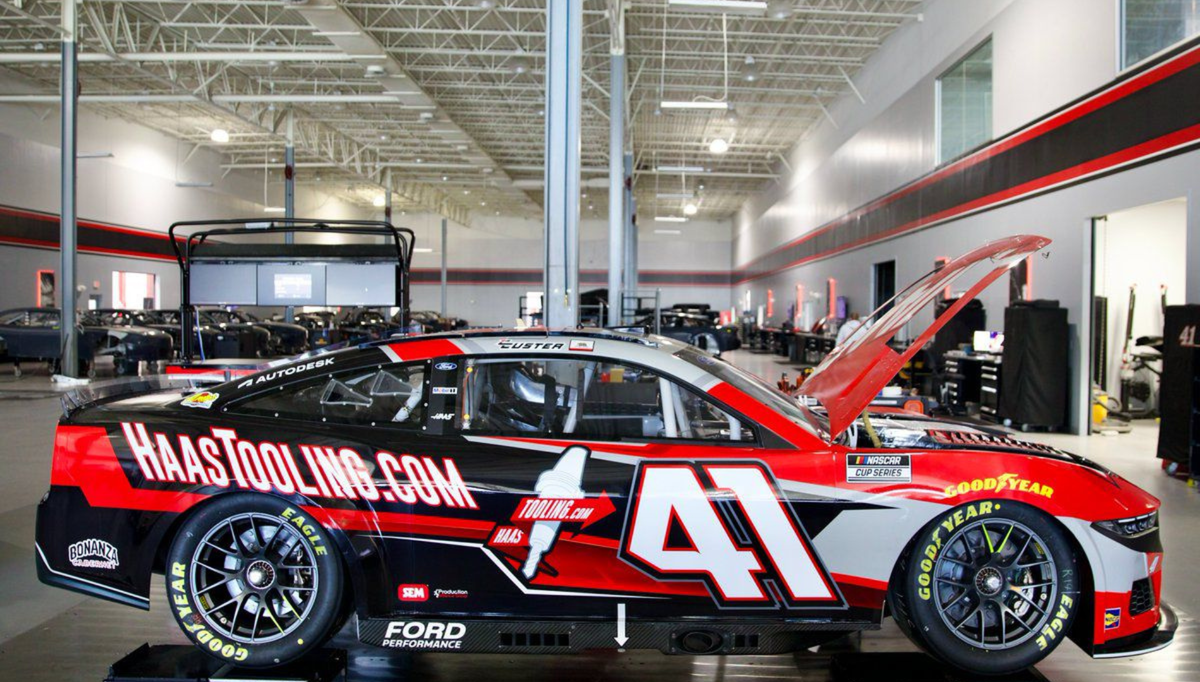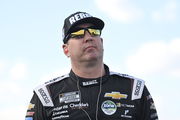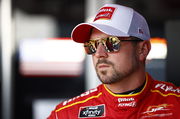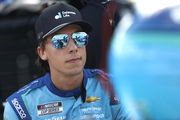

It finally happened. NASCAR’s worst-kept secret is finally out in the open, as the Haas Factory Team confirmed what most in the community had long expected. The team is leaving Ford and switching to Chevrolet from the 2026 season. The deal doesn’t just end with a manufacturer swap, as Haas will also be entering into a technical alliance with Hendrick Motorsports, NASCAR’s most successful team. As things stand, its driver lineup is expected to remain intact, with Cole Custer continuing in the Cup Series, while Sheldon Creed and Sam Mayer will be competing in the soon-to-be-renamed O’Reilly Auto Parts Series.
Watch What’s Trending Now!
The optics surrounding the switch are as important as the move itself. With Chevy entering the picture, the team is officially moving forward from the Tony Stewart era. Back in the day, Smoke’s partnership with Gene Haas helped create the iconic Stewart-Haas Racing, which won two Championships in 2011 (Stewart) and 2014 (Harvick) after being backed by Ford. But the team shuttered down last year, and Haas has now chosen to go a different route, switching from a manufacturer that has been around for his team since Day 1.
ADVERTISEMENT
What Haas Gains From Hendrick
The Haas Factory Team has plenty to gain from having a technical alliance with Hendrick Motorsports. For one, Hendrick has a state-of-the-art infrastructure, chassis preparation, aerodynamic development, and simulation data, which can make a world of difference in a sport that is often defined by fine margins. Gene Haas can also rest easy knowing that his team will be tied to the same technical ecosystem that is being used by the likes of Kyle Larson, William Byron, and Chase Elliott, title contenders in the NASCAR Cup Series.
That’s a significant improvement from what he’s used to, especially in the final years at Stewart-Haas Racing. The team struggled to keep pace with the likes of RFK Racing and even Richard Childress Racing in the last few seasons, and the organization never really looked the same after the introduction of the Next-Gen car. Even Ford didn’t consider SHR a top-tier ‘asset’ in the last few years. But now, the Haas Factory team will benefit from getting priority at Chevrolet.
Hendrick Motorsports sits at the very top when it comes to the American manufacturer’s list, and Gene Haas’ team is all set to get those same benefits. This means the team doesn’t need to figure things out on its own anymore, but simply follow HMS’ guidance, and success should follow.
ADVERTISEMENT
Top Stories
Kyle Busch Hits Rock Bottom as Snowball Derby Nightmare Sparks Wave of Fan Sympathy

Dale Jr.’s Media Empire Targeted as YouTuber’s Unjust Attack Sparks Fan Outrage

‘RIP’: NASCAR World Crumbles in Tears as 39-YO Former JR Motorsports Driver Passes Away

Carson Hocevar Takes a Sly Dig at NASCAR’s Data-Driven Gimmicks in Honest Dirt Track Rant

Kevin Harvick Son Keelan Silences Critics With Masterclass Comeback to Hunt Down Rivals in Biggest Career Win

The Ford Fallout
It’s not looking too good for Ford, is it? While the manufacturer has dominated the Next-Gen era with Team Penske, the Haas Factory Team’s switch leaves another hole in its roster. In the last few years, they’ve lost Chip Ganassi Racing when Trackhouse Racing took over, and Leavine Family Racing to Toyota, which only leaves Roger Penske’s team, Front Row Motorsports, and RFK Racing. That’s a pretty thin lineup, especially in comparison to Chevy and Toyota.
ADVERTISEMENT
However, not all is lost for the American manufacturer. They still have drivers like Joey Logano and Ryan Blaney, drivers who have won the championship in the last three years. Brad Keselowski and Chris Buescher are also forces to be reckoned with in the Cup Series. However, Haas’ departure is a major blow, especially considering that it narrows Ford’s development and testing depth, especially at a time when Ford is desperate to squeeze every drop of performance from the Next-Gen car.
It also means Ford has a narrower pool to gather data from, fewer opportunities to test setups under race conditions, and not enough pipelines for developing drivers to make their way to the highest level. Sure, there is the competitive aspect to things, but Haas’ departure will affect the manufacturer from a strategic point of view more. As each team provides data to its engineering programs, this makes a big difference in the long run.
ADVERTISEMENT
Manufacturer Dynamics in 2026
Haas Factory Team’s decision to switch manufacturers isn’t an isolated scenario. This situation is a wider reflection of how manufacturer wars are being fought in the Next-Gen era. Back in the good ol’ days, a team could gain an advantage over its competitors by developing an aero-package or making some improvement under the hood. But the cars are too standardized now, and the industry is more data-driven than ever before. What makes a manufacturer succeed in the long run is its alliances.
It looks like Chevrolet has it all set for 2026. Hendrick Motorsports will always be their priority, while Trackhouse Racing will be used to push innovation, and the Haas Factory Team will provide depth to the manufacturer. Toyota may have some quality teams, such as Joe Gibbs Racing and 23XI, but they don’t have the quantity to operate on the same scale, while Ford runs the risk of being left behind unless it strengthens their existing partnerships and attracts new ones.
This is a statement move by Chevy, and it’ll be interesting to see how Ford and Toyota respond. Will the Japanese manufacturer try to rope in another team, like they did with Legacy Motor Club? Perhaps Ford will try to get a smaller, independent team into the mix and attempt to expand Front Row Motorsports’ operations. Time will tell.
ADVERTISEMENT
A Business-First Era, Not a Loyalty-First One
Ultimately, there is no room for sentimentality in motorsports. Haas Factory Team’s switch to Chevy is a practical decision, as it safeguards the organization’s future while making them competitive in a shorter timeframe. ‘Loyalty’ only exists in NASCAR as long as the results back it up, and team owners no longer feel compelled to stick with a manufacturer because of longstanding ties. They’re aligning with whoever gives them the best opportunity to win, and most importantly, survive in a sport where the costs are getting increasingly higher and the margins are razor-thin.
For Gene Haas, this means joining the Hendrick Motorsports ecosystem and using the momentum Chevrolet has worked so hard to build. And for the manufacturer, it’s all about adding depth to their already impressive roster. Meanwhile, it’s also a reminder to Ford that lagging in such a cutthroat industry can have some serious repercussions. The ‘manufacturer war’ is all about alliances, ecosystems, and development pipelines, and it looks like Chevy is winning it right now.
ADVERTISEMENT
ADVERTISEMENT
ADVERTISEMENT
ADVERTISEMENT

